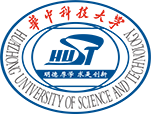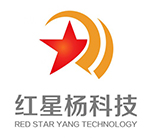Workshop 02: Light-matter interaction in semiconducting nanostructures
DATE: 9/26/2019
Workshop 02
Light-matter interaction in semiconducting nanostructures
November 11, 2019 Wuhan, China
Organizers
 |
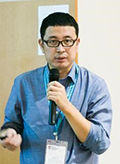 |
| Qihua Xiong Nanyang Technological University, Singapore |
Dehui Li Huazhong University of Science and Technology, China |
Light-matter interaction is not important for fundamental understanding the basic optical processing in materials, but also plays an indispensable role in a variety of optoelectronic applications and devices including solar cells, light emitting devices, lasers, photodetectors and a few to name. This workshop will focus on the light-matter interaction in semiconducting nanostructures and the topics will cover luminescence spectroscopy, ultrafast spectroscopy, Raman spectroscopy and electron-phonon coupling.
Invited Speakers
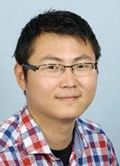 |
Weibo Gao, Nanyang Technological University, Singapore Title: Valley hall effect in 2D heterostructures Abstract: In this talk, I will give a report about interlayer exciton in WSe2/MoS2 heterostrucure and their opto-electric manipulation. First, I will talk about their formation from both monolayer-monolayer and multilayer-monolayer heterostructure. They process a number of preferable characters such as long lifetime and robust valley polarization. Based on these characters, I will talk about their application in valley Hall effect and exciton manipulations. |
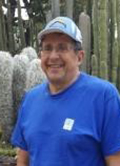 |
Jacob B. Khurgin, Johns Hopkins University, USA Title: Optical nonlinearity in semiconductor nanostructures-figures of merit Abstract: Semiconductor nanostructures such as quantum wells (QWs) and quantum dots (QDs) can be looked upon as artificial atoms and molecules on a larger (few nanometers vs. 1-2 angstroms) scale. Consequently, nonlinear optical properties in QWs and QDs can be significantly enhanced,. The enhancement, however is limited by a number of factors, all of which will be reviewed in this talk, while the figures of merit that facilitate optimization of nonlinearity for different applications will be discussed. The latest experimental results for enhancement of second and third over nonlinearity in QW’s will be reviewed. |
 |
Zhiyuan Li, South China University of Technology, China Title: Quantum and optical interaction in strongly-coupled plasmon-molecule system Abstract: There is a great interest in the science of physics, optics, and photonics to clarify the nature of light and photon. Classical wisdom of wave-particle duality says that it is impossible to observe simultaneously the wave and particle nature of microscopic object, such as photon [1,2]. Mathematically the principle requests that the interference pattern fringe visibility V and which-path distinguishability D satisfy an orthodox limitation as V2+D2 ≤ 1 . In 2017 I proposed a modified Mach-Zehnder interferometer (MZI) named weak-measurement MZI [1]. This MZI replaces the second beam splitter in classical MZI with a special interference screen (IS) that can record faithfully the interference pattern of photon while only perturbing the wave function of incident photon beam weakly. Thus this weak-measurement MZI allows for observation of photon beam interference pattern with perfect visibility ( V = 1) and nearly perfect power to identify which path each photon comes along ( D → 1). In this talk I will discuss this fundamental problem in the framework of quantum mechanics, and discuss our recent experimental implementation of this weak-measurement MZI [3], which indeed enables us to achieve pronounced interference pattern forms with a very high fringe visibility as V ≈ 0.97 and simultaneously a high path distinguishability as D ≈ 0.89, and more importantly V2+D2 ≈1.73 >>1 , far exceeding the orthodox limitation set by the classical wave-particle duality. We believe more delicate experiments in future should allow one to reach the ultimate regime of V2+D2 → 2, shed new light on the foundations of contemporary quantum mechanics, and give a better answer to the question of what is the nature of light and photon. References: 1. Zhi-Yuan Li, “Weak-measurement Mach-Zehnder Interferometer for testing wave-particle duality”, EPL 117, 50005 (2017). 2. Zhi-Yuan Li, “Atom interferometers with weak-measurement path detectors and their quantum mechanical analysis”, Chin. Phys. B 28, 060301 (2019). 3. Fenghua Qi, Zhiyuan Wang, Weiwang Xu, Xue-Wen Chen, and Zhi-Yuan Li, “Towards Simultaneous Observation of Path and Interference of Single Photon in a Modified Mach-Zehnder Interferometer”, preprint at arXiv 1908.04982 (http://arxiv.org/abs/1908.04982) |
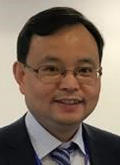 |
Anlian Pan, Hunan University, China Title: Low-dimensional metal halide perovskites for integrated photonics Abstract: In this talk, I will talk about our recent research progress on high quality low dimensional metal halide perovskite structures and their interesting photophyscis properties and applications on integrated photonics and optoelectronic devices. |
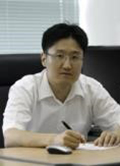 |
Hong-Gyu Park, Korea University, Korea Title: Nanowire Photonic Devices Abstract: In this talk, I will present photon-triggered nanowire (NW) transistors, photon-triggered NW logic gates as well as a single NW photodetection system [Nature Nanotechnology 12, 963-968 (2017)]. NWs were synthesized with long crystalline silicon (CSi) segments connected by short porous silicon (PSi) segments. In a fabricated device, the electrical contacts on both ends of the NW were connected to a single PSi segment in the middle. Exposing the PSi segment to light triggered a current in the NW with a high on/off ratio of >8 × 106. A device that contained two PSi segments along the NW can be triggered using two independent optical input signals. Using localized pump lasers, we demonstrated photon-triggered logic gates including AND, OR and NAND gates. In addition, we used the high photosensitivity and fabricated a submicrometer-resolution photodetection system. Photon-triggered transistors can offer a new venue towards multifunctional device applications such as programmable logic elements and ultrasensitive photodetectors. |
 |
Qihua Xiong, Nanyang Technological University, Singapore Title: PerovLight: perovskite materials for emergent nanophotonics and polaritonics Abstract: Halide perovskites have recently attracted tremendous attention due to their remarkable properties as an optical gain material, which have shown high performance in solar cells, light-emitting diodes, photodetectors and many other optoelectronic applications. In this talk, I will first review our recent progress in the investigation of halide perovskite materials as excellent optical gain materials, which can be synthesized by either physical or chemical ways. Steady-state and transient spectroscopy approaches can elaborate the large exciton binding energy higher than room temperature thermal excitation energy, and exciton dynamics. High crystalline quality supports the optically pumped photonic lasing based on the intrinsic whispering gallery mode cavity, while the lasing quality factor can be as high as 5000 in all-inorganic perovskite crystals. Next, I will present our experimental realization of room-temperature polariton lasing in all-inorganic cesium lead chloride perovskite crystals embedded in two distributed Bragg reflectors. The perovskite crystals possess efficient polariton-polariton scattering due to the Wannier-Mott exciton nature with large binding energy. The polariton lasing is evidenced by a superlinear power dependence, macroscopic ground state occupation, and increase of the temporal coherence. Finally, we will present our recent results of manipulating polariton Bose-Einstein condensate in one-dimensional perovskite waveguide and lattices, opening a new venue towards room temperature quantum fluids of light and quantum optics. |
 |
Ting Yu, Nanyang Technological University, Singapore Title: Optical investigation of strong light-matter Abstract: Two-dimensional (2D) materials, such as graphene and monolayer transitional-metal-dichalcogenides (TMDs), have aroused great attention due to the underlying fundamental physics and the promising atomically-thin optoelectronic applications. Optical properties of these 2D materials are fundamentally interesting such as collective charge-density-wave (CDW) states of TMDs and strong excitonic emission in monolayer WS2. Meanwhile, development of practical optoelectronics based on 2D materials is very promising, which opens many opportunities for the next-generation light-emitting applications such as valley light-emitting diodes and on-chip vertical-cavity surface-emitting lasers (VCSELs). Here, we report observations of CDW phase transitions of 1T-phase TiSe2 and 2H-NbSe2 layers, wealthy excitonic emission states of monolayer WS2, and 2D semiconductor lasing from monolayer WS2 embedded VCSELs. Variable temperature-dependent Raman spectroscopic measurements were carried out to estimate the CDW phase transition temperatures of 1T-TiSe2 and 2H-NbSe2 layers, indicative of high crystal quality. By electrostatic and optical doping, tunable excitonic emission has been achieved due to interplay of various excitonic states. Meanwhile, the doping dependences of excitons, trions, biexcitons and diverse bound excitons associated with impurities and structural defects have been discussed. Furthermore, we realize room-temperature low-threshold lasing from monolayer WS2 activated VCSELs under continuous-wave optical pumping, which are intrinsically compatible with the prevailing monolithic integration technology. Overall, our studies provide many new understandings on fundamental light-matter interactions in atomically thin materials and pave ways to develop industrially attractive light-emitting applications based on 2D semiconductors. |
 |
Shunping Zhang, Wuhan University, China Title: Nanocavities for strong light-matter interaction Abstract: In this talk, I will talk about our recent works on the integration of monolayer transition metal dichalcogenides (TMDs) and plasmonic nanocavities. The strong coupling between nanocavity plasmons and 2D excitons show lots of interesting phenomenon, including the formation of plexcitons [1], the maximizing of light emission from the coupled system [2] and the probing of quantum-limited plasmonic field enhancement [3] and the ultrafast decay process [4]. These interaction covers from strong coupling regime, intermediated coupling, all the way to weak coupling, providing an ultracompact platform to exploit the quantum nonlinear optics at room temperature. Reference 1. D. Zheng, S. Zhang, Q. Deng, et al., Nano Lett. 17, 3809 (2017). 2. J. W. Sun, H. T. Hu, D. Zheng, et al., ACS Nano 12, 10393 (2018). 3. W. Chen, S. Zhang, M. Kang, et al., Light: Science & Applications 7, 56 (2018). 4. Y. X. Zhang, W. Chen, T. Fu, et al., in revision. |


